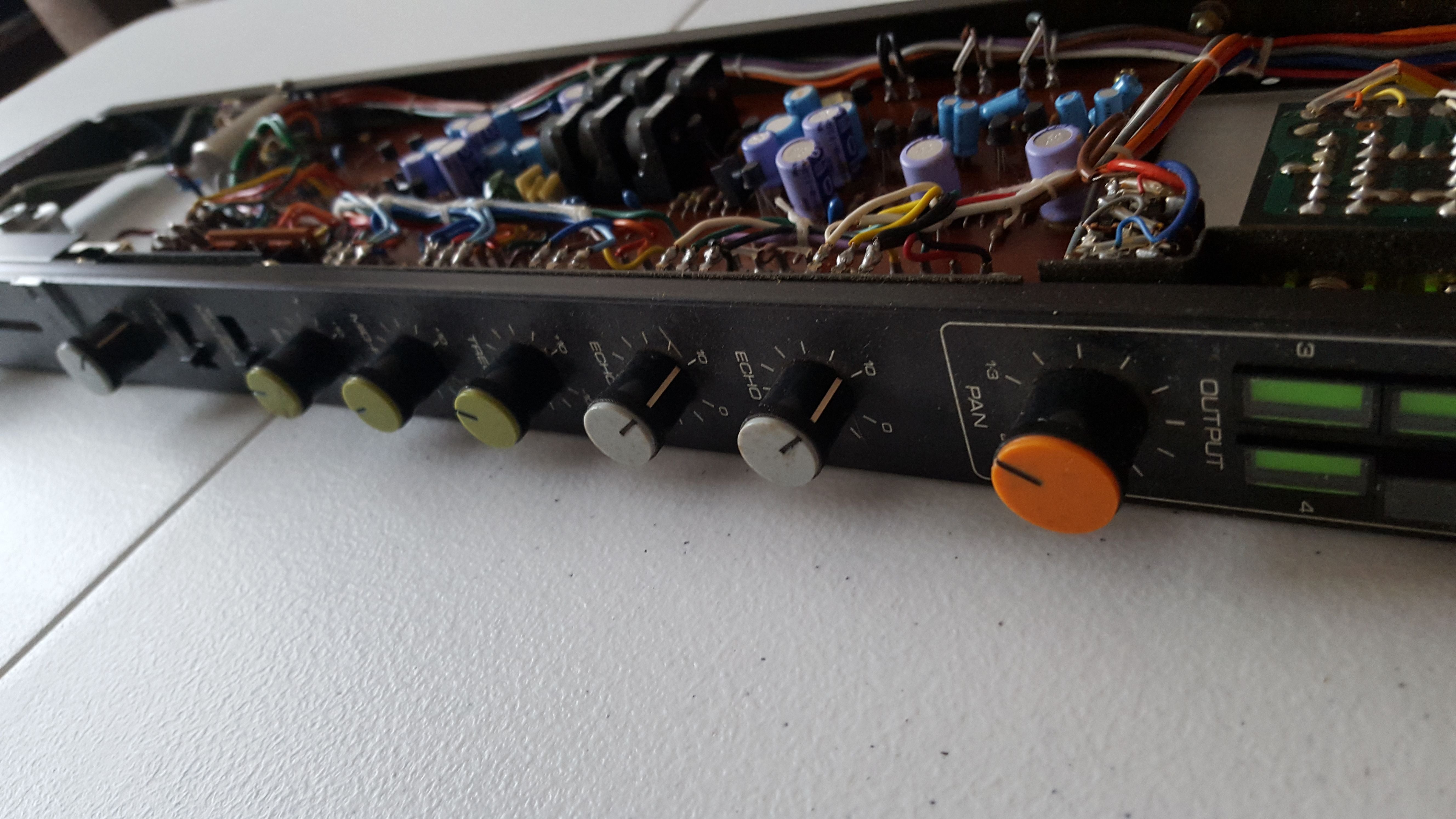Some of you may be familiar with the legendary Yamaha PM1000. Fully discrete, meaty preamps, and just plain heavy. This board is roughly 180 pounds of pure 70's sound. I just picked one up and can't wait to start working on it! The PM1000 was designed by Yamaha due to the outbreak of a major company known as Neve. In this decade, Rupert Neve had developed some of the most desired circuits in the industry. His mic pre's were so clear, punchy, smooth (insert cliche word here), that every sensible studio owner wanted one. The only problem was the substantial price tag that accompanied them. Thus, Yamaha decided they were going to do something similar, but for a fraction of the price. And the PM1000 was born! These consoles are referred to as a "JapanNeve" and "the best thing Yamaha ever made!" 
In making the PM1000 they got the big stuff right. These boards have unbelievable headroom. They put a high quality transformer on every input and output. The design is all discrete. No little noisy, clinical, IC chips in this mixer. The equalizer is inductor based, meaning it's a high quality way to build an equalizer. Even stock they sound punchy and have that old Neve sound that everyone loves, especially in today's sterile digital world. 

However, there are some issues with the stock consoles that steered many people in other directions. In order to keep costs low, in some places they used lower quality Tantalum caps. This keeps the preamps from being as clear as they could be. The EQ points are set at 10KHz (high band), 1KHz, 2KHz, 4KHz (variable mid), and 100Hz (bass). In short, these are not the most sought after EQ points, and seem to have been chosen because they are nice round numbers, as opposed to choosing more musical EQ points as was done on Neve or API equalizers. There are also no direct outputs for the individual channels. Stock, everything has to be routed through the 4 master output modules, which was a common design choice of that period. 
So, to complete the legend, many engineers began to change the capacitors, which in turn, changed the parts that they didn't like. In changing the capacitors, they also altered the EQ points to more "musical" EQ points. Direct outputs were also added. After surgery, these mixing desks were and are some of the best that money can buy! 
I will be posting updates and sound samples from my console as I upgrade it, so stay tuned for more in the near future! 


